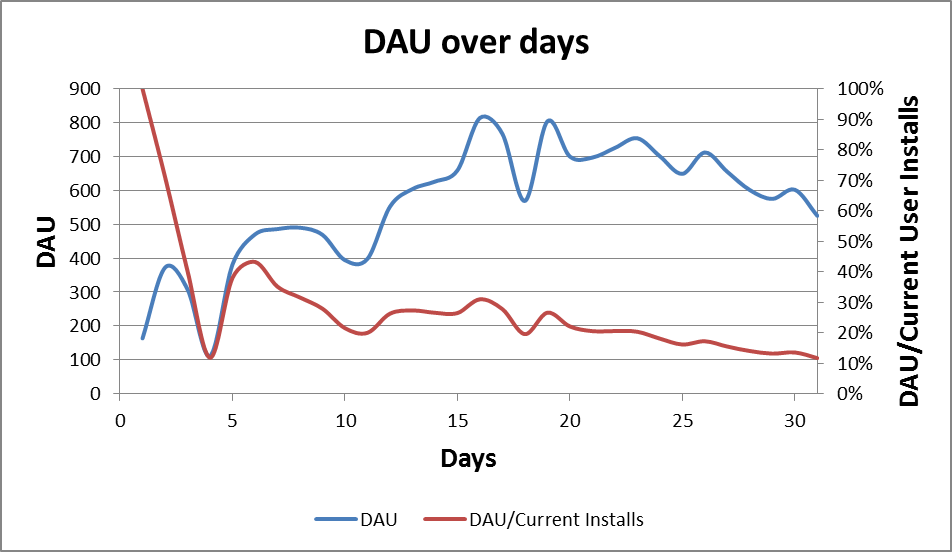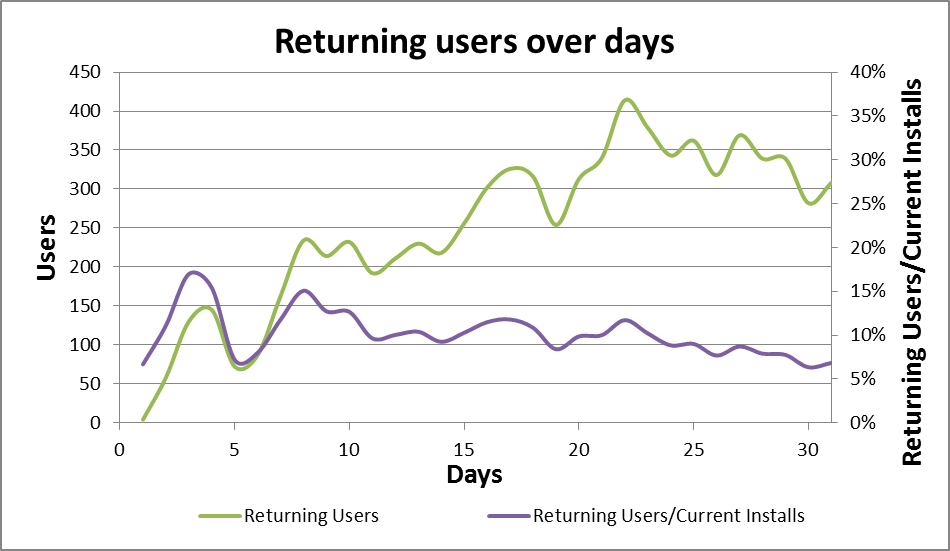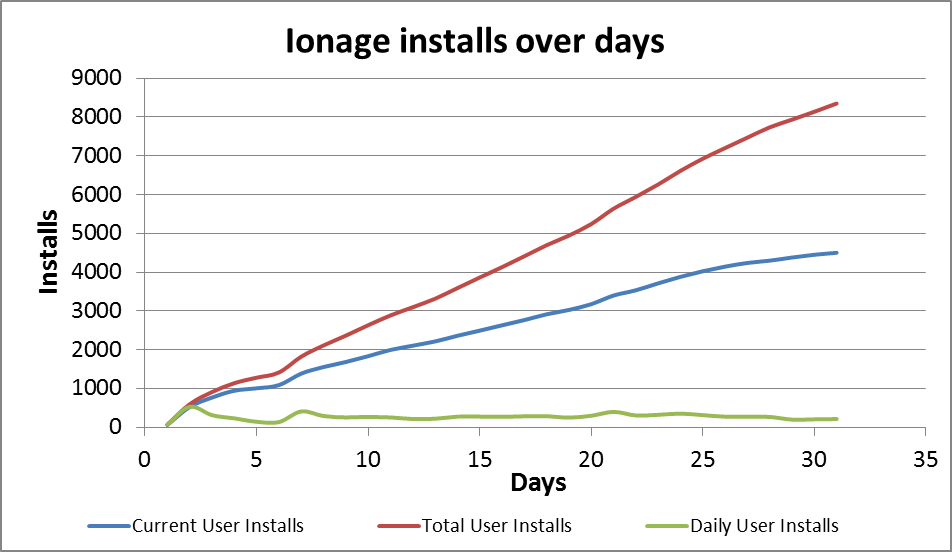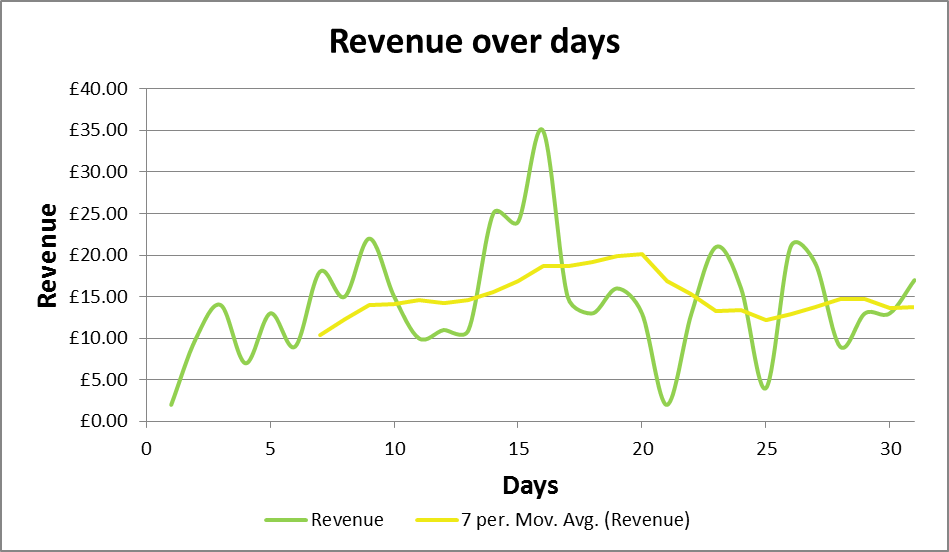Trending
Opinion: How will Project 2025 impact game developers?
The Heritage Foundation's manifesto for the possible next administration could do great harm to many, including large portions of the game development community.

Featured Blog | This community-written post highlights the best of what the game industry has to offer. Read more like it on the Game Developer Blogs or learn how to Submit Your Own Blog Post
In this third article in a series of Indie Perspectives Tim Wicksteed gives a post-mortem on the launch of his first F2P game, Ionage. After digesting and divulging all the interesting numbers he looks to the future and the next steps for the game.

This is the third article in a series of indie perspectives. In the first I looked at the Free to Play (F2P) vs Premium Dilemma and decided that Ionage, my first commercial title as an indie developer, would be F2P. In the next article I looked at implementing and evolving the F2P design pattern, here I described the manner in which I planned to implement F2P in Ionage.
Ionage has now been released, as of a month ago, and since then I have been busy promoting, updating and analysing. In this third article I’m going to give my indie perspective (or should that be retrospective) on the game’s launch, with a focus on how my proposed F2P implementation performed in anger.
The IAPs in Ionage work a little differently to the majority of F2P games. Although the exact implementation is a little different to the plan I laid out in my last article, the main goals are the same. I wanted to create a system which had no tedious grinding mechanics but which still gave the player a good reason to spend.
To achieve this Ionage has no in-game currency, all IAPs are permanent one-time unlocks. Crucially, there is no way to grind your way to unlocking anything covered by an IAP. My argument for this is that permanent unlocks give the player a greater sense of ownership/value than consumable ones and that with no alternative but to pay there is a good reason for the player to spend.
The major consequence of this tactic though, as spotted by Ben Sipe in his Improving Freemium Design article looking at Ionage, is that this strategy limits the Life-Time Value (LTV) of the player. In Ionage, it’s not currently possible to spend more than £9 and really you can get 90% out of the game for just £2. This was a deliberate, if potentially misguided, design decision. The aim of my bizarre experiment was to see if I could create an IAP policy that promotes higher conversion rates but lower LTV because, quite simply, I’d rather make my money from a lot of people paying a little than a few people paying a lot.
To see how it went let’s delve into the statistics. The following is true as of 26/08/13, exactly one month after launch.
Conversion rates – Ionage’s lifetime conversion rate worldwide is 2.3% which seems to be in the middle of the pack quoted for Android games, albeit almost two years ago, on GamesBrief. An interesting addendum is that in the UK, where 20% of my users are based, the conversion rate comes in at 3.7% and at times over the last month has averaged over 4%. This suggests to me that my policy of permanent IAPs is particularly attractive to the UK mindset.
ARPPU – So far, the worldwide Average Revenue Per Paying User is £2.25 and is led by the USA who spend £3.65 on average. Interestingly, while UK users convert at a higher percentage than the USA, they spend 28% less on average at £2.61 per user.
ARPU – So far, the worldwide average lifetime revenue per user (including those that pay nothing at all) is 5p. Despite having a lower ARPPU than the USA, UK users top this statistic at 10p per user. Clearly the higher conversion rate in the UK makes up for the slightly lower spend per user. In terms of lowest ARPU, that prize goes to Russian users at 0.22p. To put that into context, that’s 45 times less than my UK users. I also have some fairly compelling evidence that Russian users have managed to trick the game into thinking purchases have been made, as the numbers from my analytics service don’t match with the actual revenue statistics. It’s not a huge problem given the very low conversion rates and a non-paying player who enjoys and publicises your game is better than no player at all!
Engagement – The graph below shows the game’s Daily Active Users (DAU) as well as DAU/current installs since launch. These graphs are heavily affected by the number of new users joining the game each day. Therefore, I prefer to look at returning users as this removes the effects of promotional activity and just looks at how effective the game is at engaging with and holding onto its users. The graph below it shows returning users over days as well as the ratio of returning users to current installs.

DAU over days

Returning users over days
Ionage is able to pretty consistently pull back 10% of its current user base into the game each day to play. I believe this suggests that the game has highly addictive qualities. Given that the user base is increasing each day, the number of returning users has to increase as well to maintain the same percentage. This suggests that the game is able to keep people coming back day after day, not just once or twice.
Given that Ionage is my first commercial title as well as my first foray into the world of F2P, I’m pretty happy with the metrics. When you note that I’m a one-man team with just a single salary plus artwork and music costs to pay for, the metrics don’t need to compete with the number one grossing app on the chart for the game to be a financial success for me.
However there is an elephant in the room. So far I’ve been talking mainly about percentages or averages rather than straight figures. However you might have noticed the number of users on the last two graphs. No, unfortunately they are not in thousands!
The truth is that while I believe the metrics are strong, the overall numbers are not. At just under 8500 downloads at this point; the total numbers are just not large enough to sustain full-time development. The good news is, at least so far, the numbers are still going up, just not very quickly.
Installs over days

Revenue over days
So if user acquisition is my biggest issue, it begs the question: what have I done to gain users and how can I get more? Well like most indies bringing out their first game, I did my research. I read all the articles about how to contact the press and I spent time crafting emails and contacting people from all over the industry. Here are the success stories:
Ben’s great article that I mentioned earlier led to a triple whammy record of new users, daily active users and revenue the day it came out
I appeared on Guy Cocker’s Video Games Podcast a couple of weeks ago which seemed to give a modest boost to downloads over the following week
The game was spotted by Stuart Dredge in his regular column for the Guardian online newspaper and was featured in both the ‘20 Best Android Apps this Week’ and ‘50 best Android games from 2013’
The game was featured and critically praised by a few Android review sites
The game seems to be almost universally enjoyed by my users with 87% opting to leave a 5 star review
Unfortunately the game failed to make a splash in any of the big online publications that I targeted: One which focused on hardcore mobile titles, one that focused on indie games and a large mobile gaming site. Let me make it very clear, I don’t begrudge any of these sites for not featuring the game. I know journalists and editors have a difficult job and when an email appears in the general [email protected] inbox then it’s tough to separate the wheat from the chaff. The advice I’ve been given since is to forget the publically available ‘catch-all’ inboxes and concentrate on cultivating selective, more personal relationships with individual journalists. If there are any journalists reading this then feel free to drop me a line if you are keen on the strategy or Android scenes. I’d love to hear from you.
Over the last week I’ve been experimenting with advertising via Google’s Adwords service. Although based on a relatively small sample size – I’ve only spent just over £10 – the outlook doesn’t look good. Even with tightly focused slogans and only paying for actual clicks, the cost per acquisition has been well over £1 per user in the UK. This warrants further scrutiny of my metrics. While I am perfectly happy with an ARPU of 10p when I gain users organically, it’s clearly not sufficient for any type of paid acquisition. With the top grossing games able to pull in average revenues greater than £1-2 per user (that’s including all the people who play for free) I am effectively being priced out of the paid acquisition market. I’m going to have to find another way to find users.
My first goal moving forward is to maximise the market penetration of version one of the game. To do this I’m taking the game to the Samsung Apps store, where it is currently awaiting approval, via 100% Indie – a scheme created by the founders of Chillingo. I’m also thinking about taking the game to the Amazon marketplace as tablet oriented games are rumoured to do well there despite the smaller number of users. The game is also currently being translated into Korean and I’d like to do the same with Japanese. These are the largest Android markets, in terms of revenue, alongside the USA [REF] but so far I’m seeing very few users. This suggests to me that in general, Korean and Japanese Android gamers like to play their games in their own language. Fair enough!
Although I’ve considered taking the game to iOS, it is difficult to make the business case when you look at the game’s current revenue pitted against the cost of porting. I’ll monitor this and if I make the judgement that it is worth it in the future, then it is definitely something I’d like to do.
The final option I have to increase my user numbers is to add new features to the game. The Ionage community has already reacted positively to the suggestion of a split-screen multiplayer mode, endless mode and the integration of Google Play Game Services. However, making the business case for them is difficult based on current user numbers. I will focus primarily on features/game-modes that have social aspects as these have the potential to drive additional users to the game as well as extra revenue from existing ones.
Looking at the F2P implementation specifically, Ionage has strengths and flaws. It has a moderate conversion rate but the ARPU is too low to justify paid user acquisitions. To make up for this, the game really needs social mechanics to drive user downloads; it is here I believe the game’s biggest flaw lies.
Gameplay-wise the response has been almost unilaterally positive. The worst comments I’ve had were from users who complained the game was pay-to-win, however one user was kind enough to prove this is not the case. Based on this I’m keen to continue to develop the IP and I’m confident, that if I can find the right platform/marketing strategy/business plan then I can make it a success.
Well that’s my indie perspective, what’s yours?
Contact:
@twicecircled
Read more about:
Featured BlogsYou May Also Like